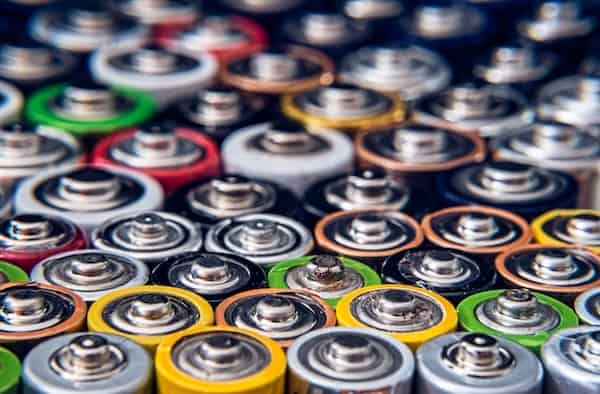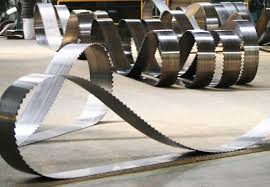Tech News
Maximizing Forklift Efficiency Through Battery Repair and Maintenance
Whether your forklifts use traditional lead-acid batteries or maintenance-free AGM or lithium, they require regular care and servicing. Regular maintenance can increase the battery’s lifespan. Do not let your forklift batteries deplete to more than 30%. Discharging batteries to this point will cause hard sulfation, which can significantly shorten their lifespans.
Inspect the Battery’s Terminals
Performing the proper forklift battery repair and maintenance procedures is essential. Not only can this save time and money, but it can also extend the life of the battery and ensure optimal forklift performance. Corrosion of the battery’s terminals is an early sign of battery failure. This occurs due to hydrogen gasses released from the sulfuric acid within the battery. These gasses react with water in the surrounding environment and corrode the terminals. Corrosion is easily prevented by inspecting and cleaning the battery’s terminals regularly. Remove the hold-down clamps and terminal posts (negative first) when cleaning. Then use baking soda with water to scrub the corrosion from the terminals, clamps, and cables. This will neutralize the acid and remove dirt and grime. After, rinse the area and dry thoroughly with paper towels. It’s also important to designate a battery charging station. It should be away from high-traffic areas and only used by those appropriately trained. This will help prevent accidental contact with the battery’s acid, which can lead to severe chemical burns. Lastly, it’s essential to regularly monitor your batteries’ specific gravity and voltage after each charge. This will help to detect any internal damage that could cause an unexpected discharge, shortening the battery’s lifespan and voiding its warranty. Inspect the terminals, venting systems, and nipples for any physical damage or loose hardware.
Check the Battery’s Electrolyte Levels
Regularly checking the battery’s electrolyte levels (the mixture of water and sulfuric acid) is essential. A low electrolyte level exposes the plates to the air, causing oxidation and reduced capacity. It also affects the charging process, as it is difficult for the battery to charge at a lower electrolyte level. Vented lead-acid batteries naturally lose electrolytes during the charging cycle. A forklift operator should periodically replenish the battery with distilled water to prevent this. A good time to do this is after each charging cycle. To do this, remove the battery’s cell caps or trough covers. Pour distilled water into each compartment until the electrolyte covers the battery plates, which can be seen through the filler holes. Water from a clean glass jar or bottle may be used, but it is preferable to use proprietary topping-up fluids, available at garages and accessory shops or from chemists in sealed containers. It is essential to avoid overfilling the battery, as this can cause a boilover and damage the plate. Using a turkey baster to control the amount of added water is advisable, as this helps prevent spillage during the filling process. A battery-testing hydrometer can be purchased from most auto supply stores to measure the specific gravity of a battery.
Check the Battery’s Temperature
A battery that is exposed to extreme temperatures can shorten its lifespan. This can occur because the batteries have to work harder to generate power when working in hot environments, and the temperature inside the battery can increase as the electrolyte inside melts or boils. Whenever possible, keep your forklift batteries in temperate climates. Checking the water levels of your batteries is another necessary battery maintenance procedure. A good rule of thumb is to have enough water in the cells to cover the plastic battery element. After charging, you should also regularly take a specific gravity reading of each cell using a hydrometer. A standard forklift battery should typically have an ideal specific gravity of 1.285. Still, it’s best to check with the manufacturer to find out what this number is for each particular model. Watering forklift batteries can help maintain their total capacity and reduce the frequency of battery replacement and recharging. Use only deionized or distilled water when watering, as regular tap water may contain minerals that can disrupt the electrolyte balance. Watering should be done when the batteries are excellent, and you should only top off the water after a fully charged cycle. To prevent acid residue from building up on your forklift batteries, clean them with battery cleaner or warm water each month. This can help avoid problems, such as conductive circuits between lead posts and the steel battery case. Keep a log of your battery maintenance procedures, and ensure that all employees involved follow proper handling techniques to avoid chemical burns.
Inspect the Battery’s Circuitry
When inspecting the batteries, be sure to check their circuitry as well. This includes examining the individual battery cells and the battery terminals for signs of physical damage such as corrosion, pitting, and arcing. It’s also important to check the battery connections for tightness and cleanliness. Ensure there are no shorts and the fuses are in good condition, especially when working with lead-acid batteries. Fuse protection helps protect the testing equipment from high currents that can cause damage. A battery cell’s open circuit voltage (OCV) reflects its ability to respond to a load pulse and is a crucial indicator of battery health. When a battery is fully charged, it will have a lower OCV and a robust recovery capability. As the battery’s state of charge depletes, it will have a higher OCV and weaker recovery capabilities. Regular maintenance of forklift batteries is necessary for warehouses that depend on them. However, if these procedures aren’t performed correctly, they could negatively impact the lifespan and performance of the batteries, ultimately resulting in lost productivity.
Related Posts












